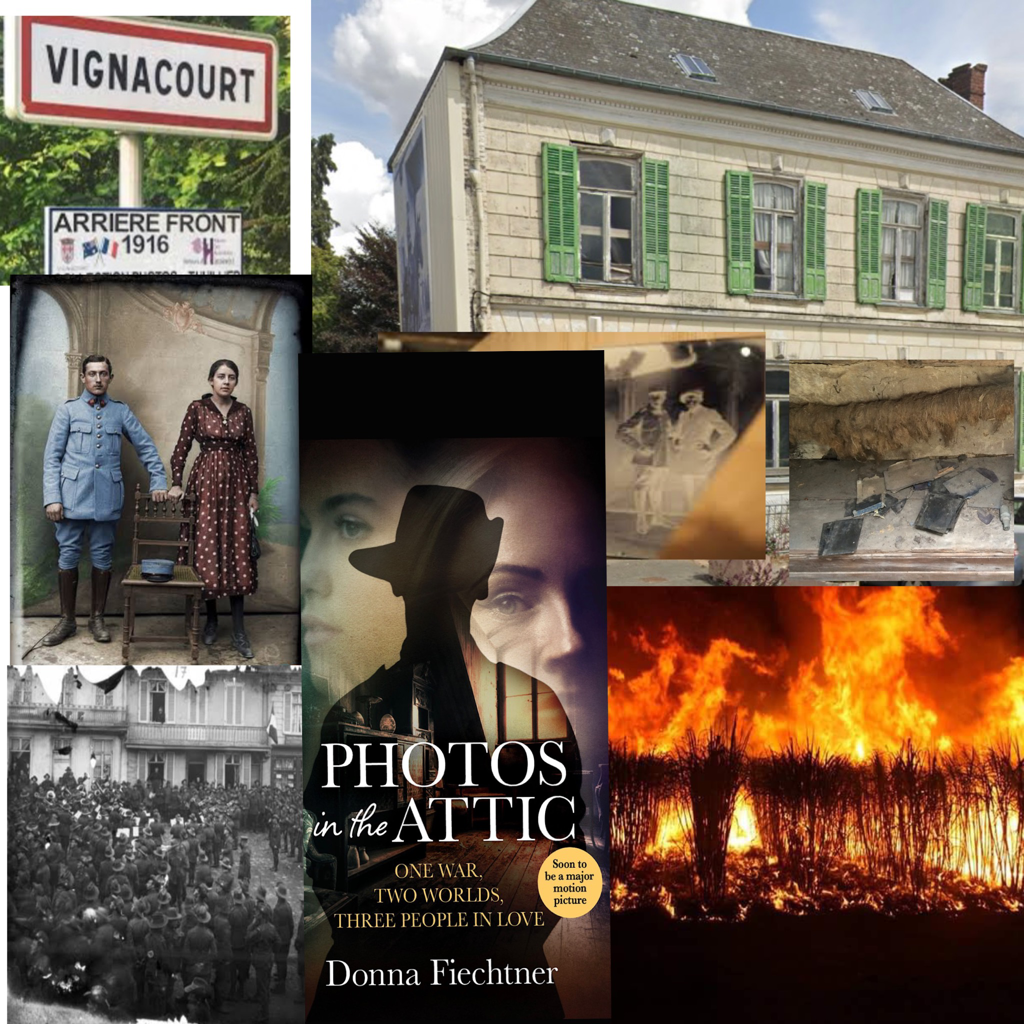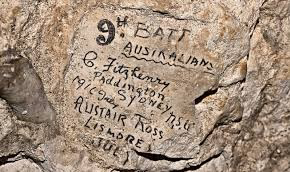The Following information is courtesy of the John Monash Centre located at Villers Bretonneux.
Travelling along the Australian Remembrance Trail is an increasingly popular way of visiting the former Western Front and now a guide has been published to help travellers on their journey.
A Traveller’s Guide is available on the website of the recently opened Sir John Monash Centre located just outside Villers-Bretonneux in France.
The Australian Remembrance Trail links the most significant sites for Australians from the First World War, including battlefields, cemeteries, memorials, museums and relics.
The itineraries suit all modes of transport, including a walk in the Somme, a bike ride through Flanders Fields, a circular trek of 16km covering the front line 1916, and the Australian Remembrance Ride from Zonnebeke in Belgium to Amiens in northern France.
The region’s military history sometimes overshadows the beauty of this part of the world, from the Bay of Somme to ancient towns like Amiens and Arras to lively village markets selling regional delicacies and wines.
From north to south, the commemorative trail runs from Ypres in Belgium, near the site of the Battle of Passchendaele, through Fromelles and Bullecourt in northern France, to Pozieres, the battlefields of the Somme and Villers-Bretonneux.
The governments of Australia, France and Belgium have worked together to update facilities and improve the experience for visitors at a number of these locations.
The new traveller’s guide, published by the Department of Veterans’ Affairs, helps visitors plan their journey and offers suggestions for those wanting to re-trace the footsteps of family members who served in the First World War.
It is rich with current details, historical images and easy to navigate maps.
The 56-page booklet is not a military history, but a practical guide with advice on where to go, what to see and do, where to stay and eat, and some suggested itineraries based on different interests and the time available.
There are also some superb walking tracks and some of the best bicycle trails in Europe.
You can view or download a copy of Australian Remembrance Trail along the Western Front: A Traveller’s Guide on the John Monash Centre Website
https://sjmc.gov.au/wp-content/uploads/2018/04/ART-A-Travellers-Guide-WEB_ENGLISH.pdf
The places remembered on the Somme and Salient .
Leper (Ypres), Belgium
During the First World War the Belgian town of Ypres (Ieper) was
devastated by shellfire and deserted by its inhabitants. Unforgettable images of
this destruction were made by the Australian official photographer, Captain
Frank Hurley, who also captured the lives of the Australian soldiers who
inhabited these ruins during the Third Battle of Ypres (Passchendaele), which
was fought to the east of the town between 31 July and 10 November 1917. The
tragedy of wartime Ieper is told at the In Flanders Fields Museum in the Cloth
Hall.
Tyne Cot Cemetery, Zonnebeke, Belgium
Towering over the headstones in the Tyne Cot Cemetery, Belgium,
is a Great Cross. Hidden beneath the cross’s stone pedestal are the remains of a
German concrete bunker which, an inscription relates, was captured by the 3rd
Australian Division on 4 October 1917. In this countryside was fought one of the
most costly and horrific battles of the First World War – Passchendaele. In the
mud of Passchendaele, in the month of October 1917 alone, the AIF lost 6673
dead. The Australian story at Passchendaele is told nearby in the Memorial
Museum Passchendaele in Zonnebeke.
Toronto Avenue Cemetery, – Ploegsteert Wood, Belgium
On the night of the 6–7 June 1917 gas shells rained on
Ploegsteert Wood. The soldiers of Australia’s 3rd Division fumbled for their gas
masks; dozens of pack horses and mules gasped for air; and men collapsed
retching by the side of duckboard tracks. They struggled on and were soon in
trenches ready to attack in the opening moments of the Battle of Messines. At
the edge of the wood is Toronto Avenue Cemetery, an exclusively Australian
burial ground, and the Battle of Messines is brought alive at the Ploegsteert
Interpretive Centre .
VC Corner Australian Cemetery and Memorial – Fromelles, France
On 11 November 1918 Charles Bean, Australia’s official war
historian, stood on the battlefield of Fromelles: ‘We found the old
no-man’s-land simply full of our dead’. These men died on 19–20 July 1916
assaulting the German lines, and their remains lie buried in VC Corner
Australian Cemetery. In 1998, an Australian Memorial Park was dedicated on the
old German front line and at its centre stands ‘Cobbers’, a statue showing an
Australian soldier carrying a wounded mate from the battlefield. The story of
this catastrophic event for Australia is now told in the Battle of Fromelles
Museum.
The Bullecourt Digger – Bullecourt, France
Helping his mother to see what the battlefield of Bullecourt in
May 1917 looked like, Private John Ware wrote: ‘if ever you saw a sheep camp in
time of drought you will know how many sheep [die] in one night our men are
lying about just the same’. Today at Bullecourt a statue, the ‘Digger’, stands
in the Australian Memorial Park gazing out towards the enemy trenches which had
cost so many Australian lives to capture. In the village, the story of the
battles fought by Australians here in April and May 1917 is told in the Jean and
Denise Letaille Museum.
Thiepval Memorial – Thiepval, France
Private George Lewis Grant, Australian Imperial Force, was
killed during the Battle of the Somme at Pozières on 29 July 1916. His body lies
in one of the most unusual cemeteries on the old Western Front, the Anglo-French
Cemetery at Thiepval. Here, on two sides of the cemetery, are the graves of 300
French and 300 British Empire soldiers, symbolising the alliance of the French
Republic and the nations of the British Empire in World War I. Over them towers
the great Thiepval Memorial with more than 73,000 names of soldiers of the
British Army who went ‘missing in action’ in the Somme
region.
First Australian Division Memorial – Pozières, France
During the last week of July 1916 shells fell in their thousands
on Australian soldiers in a village they had captured from the Germans –
Pozières. I had not the slightest idea where our lines or the enemy’s were, and
the shells were coming at us from, it seemed, three directions, wrote Australian
Lieutenant John Raws. Pozières was reduced to rubble and shattered earth, but
here the men of the First Australian Division later built their memorial in
France. They remembered the tenacity with which they had held their ground and
the comrades who had perished in the horror of those
bombardments.
The Windmill – Pozières, France
The Australian War Memorial owns a little piece of France – the
Windmill site at Pozières. Australia’s official war historian, Charles Bean,
suggested the purchase because ‘The Windmill site ... marks a ridge more densely
sown with Australian sacrifice than any other place on earth’. Over seven weeks
in 1916, at the Battle of the Somme, the Australian Imperial Force suffered
23,000 casualties, more than 6700 of whom died, in the countryside around the
Windmill. On 11 November 1993 soil from the Windmill site was cast over the
coffin of Australia’s Unknown Soldier during his funeral at the Australian War
Memorial in Canberra.
Australian National Memorial – Villers-Bretonneux, France
On 22 July 1938, Queen Elizabeth laid a bunch of poppies, given
to her by a local schoolboy, at the unveiling of the Australian National
Memorial at Villers-Bretonneux. Was she thinking of her own brother, Fergus
Bowes-Lyon, ‘missing’ at the Battle of Loos in 1915? Around the walls of the
Memorial were the names of some 11,000 Australians ‘missing’ in action in
France. On the night of 24–25 April 1918, Australian soldiers recaptured this
ground from the Germans, a battle also remembered in the Franco-Australian
museum at the Victoria school in the town. In the playground is a sign: ‘Never
Forget Australia’.
Australian Corps Memorial – Le Hamel, France
The Battle of Hamel on 4 July 1918, it is usually claimed, took
93 minutes. According to their War Diary, however, the 44th Battalion AIF
required between 95 and 105 minutes to take all their objectives.
Starting at 3.10
am, then moving around Le Hamel village,
the Western Australians advanced uphill, and by 4.55
am they had driven the Germans from a
series of trenches and dugouts on top of the hill. There today stands the
Australian Corps Memorial, with sweeping views across the valley of the Somme, a
fitting place at which to remember all the Australian battles in France in
1918.
The Second Australian Division Memorial, Mont St Quentin, and the town of Péronne, France
Between 31 August and 2 September 1918, Australia’s Second
Division attacked and captured the German stronghold of Mont St Quentin, the key
to the strategic town of Péronne on the Somme River. Tired and under strength,
units such as the 21st Battalion skilfully drove the enemy from their
well-established positions, and for his courage and leadership during the battle
Sergeant Albert Lowerson, 21st Battalion, was awarded the Victoria Cross. It was
a costly action: twenty-three men of the battalion lost their lives that day.
Today the Second Australian Division’s Memorial stands at Mont St Quentin, the
scene of one of the division’s greatest victories.
Fourth Australian Division Memorial – Bellenglise, France
Between 18 and 20 September 1918, the 48th Battalion, Fourth
Division AIF, fought its last successful action on the Western Front. Advancing
on the Hindenburg Outpost Line near Bellenglise, they suffered 65 casualties but
captured 500 prisoners, ‘nearly one per man of the battalion’. Holding the line
they got into a ‘bit of a fight’ in which Lieutenant Leslie Ward, ‘a fine
officer ... brave and efficient’ was killed. The Division, achieving all its
objectives, took more than 4300 prisoners for 1260 casualties. Today the Fourth
Division’s memorial in France stands on the heights above Bellenglise.
Material sourced- Australians on the western Front - Department of Veterans' Affairs and Board of Studies NSW



